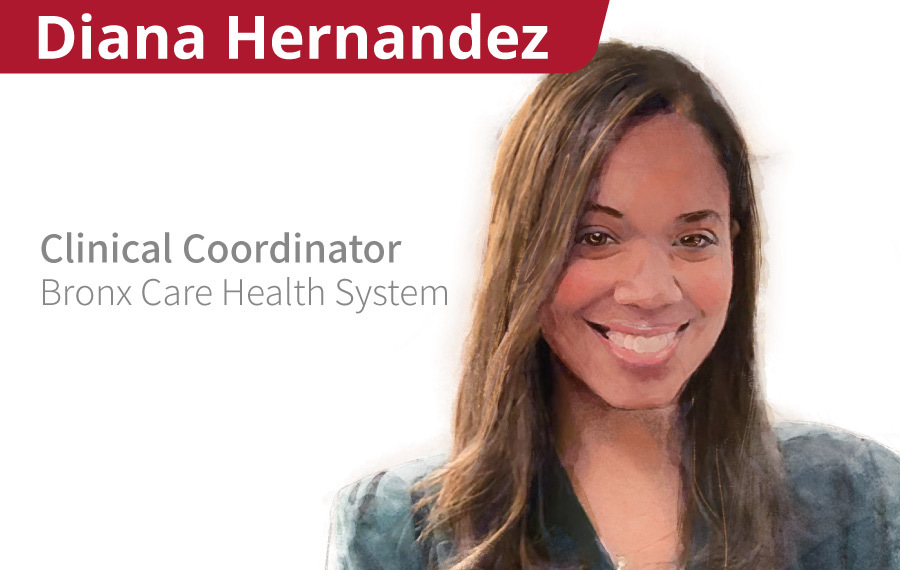You Can Help Promote Health Equity for Communities Impacted by Diabetes
People with diabetes or those at risk of the disease can be at a disadvantage if they live in underserved communities with low access to resources that contribute to a healthy quality of life. These communities are often comprised of people of color, those with low incomes, young adults without health insurance, Medicaid eligible consumers and/or refugees.


You Can Help Promote Health Equity for Communities Impacted by Diabetes
February 11, 2021
.
People with diabetes or those at risk of the disease can be at a disadvantage if they live in underserved communities with low access to resources that contribute to a healthy quality of life. These communities are often comprised of people of color, those with low incomes, young adults without health insurance, Medicaid eligible consumers and/or refugees. Fortunately, new programs aimed at giving everyone the opportunity to be as healthy as possibly are offering hope.
Disparities in Diabetes
The Centers for Disease Control (CDC) estimate that in 2018 about 34.2 million people in the United States (mostly adults) had diabetes.1 The burden of this disease is deeply felt in communities that include racial and ethnic minorities, the socioeconomically disadvantaged, and the underinsured.
In fact, nearly 40% of U.S. adults diagnosed with diabetes are people of Alaskan native, American Indian, Hispanics and Black heritages.1 And, research points to poverty increasing the odds of having diabetes.2
Incidence of type 2 diabetes among youths in this country is equally troubling. Between 2002 and 2015, new cases of diabetes in all youths increased significantly, particularly among young people of Asian/Pacific Islander, Hispanic and Black heritages.1

.
Reasons for the escalation of diabetes in underserved communities include:
- Housing insecurity
- Lack of health resources
- Subpar sources of food
- Low access to recreational facilities
Interestingly, studies have shown that the opportunity to move from an impoverished neighborhood to one with a lower level of poverty could produce modest but important reductions in the prevalence of extreme obesity and diabetes.2 This suggests that greater choices of grocery stores, proximity to healthcare providers, safer environments and more opportunities for exercise could make a difference in healthy behaviors.2,3
The negative effects of diabetes have a ripple effect in communities. Certainly, patients, their families and caregivers feel the direct effects of diabetes, both in quality of life and in the cost of paying for treatment. At times, the cost of treatment can even lead patients to forego care that is important to managing their condition.
Employers can also feel the brunt of the disease through lost productivity. In 2018, an American Diabetes Association analysis estimated the cost of missed workdays due to absenteeism among those with diabetes to be $3.3 billion, representing 14 million days.4
Likewise, healthcare systems are burdened by the disease due to the need to balance decreasing budgets for patient care with expanding numbers of patients. The fact that some of these patients lack insurance only makes the problem worse and can drive providers away from areas where they are needed the most.
Health is On The Way
Faced with a situation of epidemic proportions, leaders in underserved communities are exploring a variety of programs aimed at prevention and improved management of diabetes. Examples of these programs include:5
- The National Diabetes Prevention Program (National DPP), a partnership of organizations develops lifestyle change programs to help prevent or delay type 2 diabetes. Participants work with trained lifestyle coaches to learn to make better food choices, be more physically active and find ways to cope with problems and stress.
- The Native Diabetes Wellness Program utilizes cultural practices combined with science to help prevent type 2 diabetes among Native Americans. The program bases its materials on familiar traditions with a focus on traditional Native foods (CDC)
- The Appalachian Diabetes Control and Translation Project addresses the needs of type 2 diabetics who live in high-risk, economically distressed Appalachian communities. The programs are based on those of the National DDP. (CDC)
.
Another group established to promote community-based health and disease prevention is the Community Preventive Services Task Force (CPSTF), an independent panel of public health and prevention experts. It develops science-based recommendations and advocates the use of community health workers to launch programs.

.
Examples of the CPSTF recommendations include:6
- Intensive lifestyle interventions providing ongoing counseling, coaching, or individualized guidance to patients with type 2 diabetes to help them change their diet, level of physical activity, or both.
- Use of mobile phone apps to improve blood glucose levels among patients with type 2 diabetes. These apps may provide automated feedback, send messages from healthcare providers, or collect data that can be directly transmitted to healthcare professionals.
- Lifestyle interventions delivered during the first two trimesters of pregnancy aim to prevent gestational diabetes by actively encouraging women to eat a healthy diet and be physically active.
- Team-based care to improve diabetes control assigning a multidisciplinary team to help patients manage their diabetes. Each team includes the patient, the patient's primary care provider (not necessarily a physician), and one or more other health professionals.
Such programs have demonstrated success, but are not without pitfalls. Inclusivity and sensitivity to cultural issues are particularly important considerations. The use of community-based healthcare workers can also help bridge cultural gaps. And, the use of introductory community meetings or focus groups is suggested as a way to ensure that programs are appropriately tailored for acceptance in communities.
Getting Involved
Because a community reflects the strength of combined individual efforts, everyone can play a role in the drive to prevent and manage diabetes. That being said, it can be difficult to drive participation in communities where large numbers of people earn low incomes or are struggling with other pressures of life. Fortunately, participation can take place through small actions as well as large:
- Start being healthy and spread the word. Be active as a family.
- Talk to employers about bringing health programs to the workplace.
- Encourage your church or community center to host a talk about diabetes prevention.
- Ask local, state and national leaders to support health equity for all.
- Pursue a career in healthcare and commit to your community.
For more information on diabetes in underserved communities visit:
National Diabetes Prevention Program
National Diabetes Statistics Report
Footnotes:
1 “National Diabetes Statistics Report, 2020.” Centers for Disease Control and Prevention, Centers for Disease Control and Prevention, 11 Feb. 2020, www.cdc.gov/diabetes/library/features/diabetes-stat-report.html.
2 Gaskin, Darrell J., et al. “Disparities in Diabetes: The Nexus of Race, Poverty, and Place.” American Journal of Public Health, vol. 104, no. 11, 2014, pp. 2147–2155. doi:10.2105/ajph.2013.301420.
3 Ludwig, Jens, et al. “Neighborhoods, Obesity and Diabetes – A Randomized Social Experiment.” New England Journal of Medicine, vol. 365, no. 16, 2011, pp. 1509-1519. doi:10.1056/nejmsa1103216.
4 “Economic Cost of Diabetes in the U.S. in 2017.” Diabetes Care. vol. 41, 2018, pp.917–928. doi:10.2337/dci18-0007.
5 “Addressing Health Disparities in Diabetes.” Centers for Disease Control and Prevention, Centers for Disease Control and Prevention, 15 Apr. 2019, www.cdc.gov/diabetes/disparities.html.
6 “CPSTF Findings for Diabetes.” The Guide to Community Preventive Services (The Community Guide), Community Preventive Services Task Force, 28 Aug. 2019, www.thecommunityguide.org/content/task-force-findings-diabetes.
Featured Profile
Our new 'The Point of Care Campaign' is our way of showing appreciation to healthcare workers during COVID. Our profile this week features Diana Hernandez.
Related Articles
Introducing the HemoCue Customer Portal
